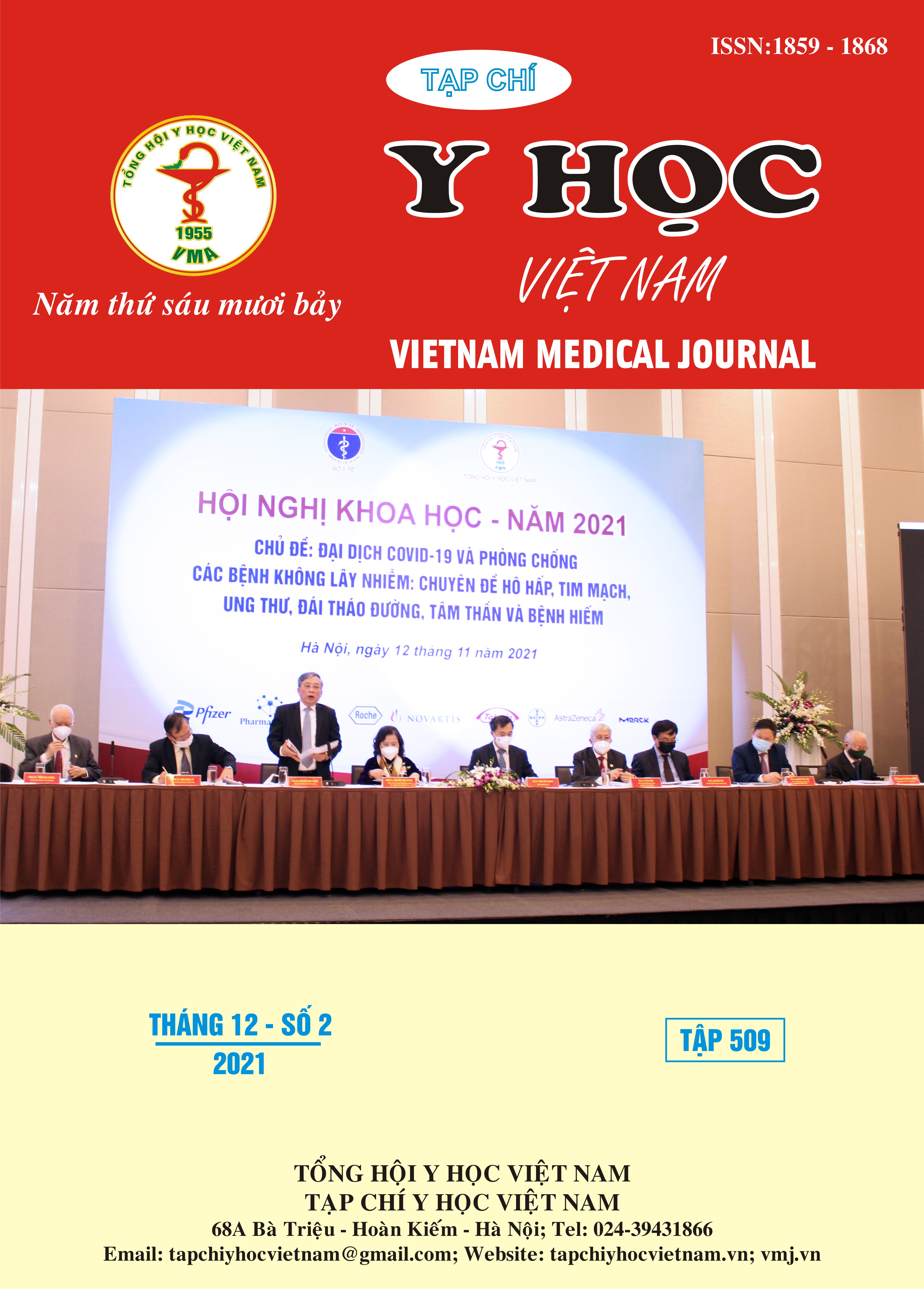THE OUTCOMES OF VENOUS THROMBOEMBOLISM PROPHYLAXIS USING RIVAROXABAN VERSUS WARFARIN DURING AND AFTER SURGERY
Main Article Content
Abstract
Objectives: To evaluate the treatment outcome of VTE prophylaxis with warfarin and rivaroxaban during and after surgery. Subjects and methods: A retrospective review of 10870 surgical patients aged >18 years from January 1, 2017 to September 31, 2018 who received anticoagulation with warfarin or rivaroxaban. Of these, 4191 patients were prevented by warfarin and 6679 were prevented by rivaroxaban. Result: During the postoperative hospital stay, there were 37/6679 (0.6%) patients treated with rivaroxaban and 52/4191 (1.2%) patients treated with warfarin being diagnosed as having VTE (including pulmonary embolism and lower extremities deep venous thrombosis). At the same time, after 90 days of discharge, 36/6679 (0.5%) patients who received rivaroxaban prophylaxis developed VTE, which is less than 51/4191 (1.2%) patients with warfarin prophylaxis. The rate of bleeding complications in the warfarin prophylactic group was higher than in the rivaroxaban prophylaxis group (7.3% and 4.2%) with statistical significance (p<0.05). Among hemorrhagic complications, the majority were cerebral infarction (3.7% in the prophylactic group with rivaroxaban and 5.9% in the prophylactic group with warfarin) in addition to gastrointestinal bleeding and some other bleeding complications. Conclusion: Rivaroxaban reduced the rate of VTE recurrence and did not increase the risk of bleeding complication in postoperative patients in comparison with warfarin, the difference was statistically significant.
Article Details
Keywords
rivaroxaban, warfarin, venous thromboembolism
References
2. Bui My Hanh, Hung Duong Duc, Nguyen Hoang Hiep Vinh Pham Quang và các cộng sự. (2019), "Frequency and risk factor of lower-limb Deep Vein Thrombosis After major orthopedic surgery in Viet Nam patients. ", Open Access Macedonian Journal of Medical Sciences, 7(24), 125-129.
3. Bộ Y tế (2015), công văn 9324/BYT-BH V/v trích xuất đầu ra dữ liệu yêu cầu thanh toán BHYT.
4. Thomas L. Ortel, Ignacio Neumann và Walter Ageno (2020), "American Society of Hematology 2020 guidelines for management of venous thromboembolism: treatment of deep vein thrombosis and pulmonary embolism", Blood Adv, 4, 4693-4738.
5. Yue Zou, Shaoqi Tian và Yuanhe Wang et al (2014), "Administering aspirin, rivaroxaban and low-molecular-weight heparin to prevent deep venous thrombosis after total knee arthroplasty ", Blood Coagul Fibrinolysis, 25(7), 660-4.
6. Kucher N, Aujesky D và Beer JH et al (2016), "Rivaroxaban for the treatment of venous thromboembolism. The SWIss Venous ThromboEmbolism Registry (SWIVTER).", Thromb Haemost, 116(3), 472-9.
7. Sean T Duggan (2012), "Rivaroxaban: a review of its use for the prophylaxis of venous thromboembolism after total hip or knee replacement surgery", Am J Cardiovasc Drugs, 12(1), 57-72.
8. Craig I C, Alexander G G và Thomas J B (2018), "Effectiveness and Safety of Rivaroxaban Versus Warfarin in Frail Patients with Venous Thromboembolism", Am J Med, 131(8), 933-938.


